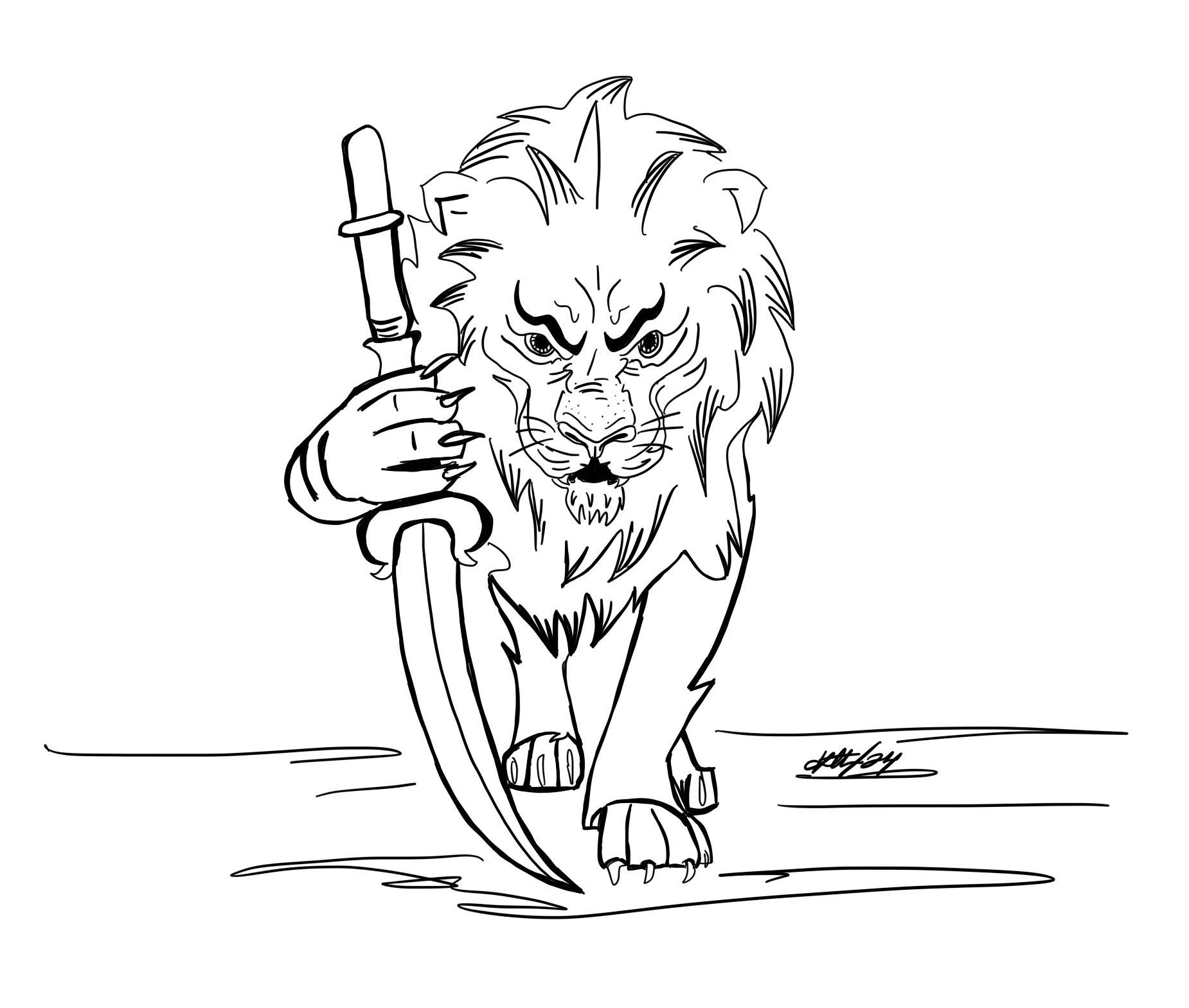Tamil Guardian editorial, London, March 17, 2024

Illustration by Keera Ratnam / @wavesofcolour
The Sri Lankan state is on a concerted mission. Following a long history of killings and massacres, it is fervently pursuing a more insidious endeavour across the North-East, attempting to erase Eelam Tamil existence. Buddhist monuments are being purposefully constructed, whilst attempts to seize Tamil-owned land have persevered through the military and government’s archaeology and forestry departments. Whilst members of the international community seem to place more interest in embellishing ties with Colombo, the Tamil homeland remains under threat.
Attempts at demographic change in Tamil Eelam are not new. They have taken place for decades under multiple Sri Lankan governments. However, under this current regime, efforts seem to have accelerated. The continued appearance of Buddhist statues by military bases coupled with the construction of stupas despite prohibitive court orders, illustrates how relentlessly ‘Sinhalisation’ is being pursued. The events in Vavuniya last week, where Tamil devotees attempted to pray at a Hindu temple as they had done for generations, even saw the state unleash violence against Tamils once more, as monks and the military claimed the area to be a Buddhist site. A parliamentarian was manhandled and, once again, Tamils were arrested by the Sri Lankan security forces. At the time of writing, they remain detained without bail. All for simply wanting to follow their own traditions, in their own land.
The coming months will see more of such activity from the state. Just last month, Sri Lanka’s president Ranil Wickremesinghe declared several Buddhist sites, including in the North-East, as “sacred”, granting them another layer of bureaucratic protection – alongside the tens of thousands of soldiers deployed in the region. Wickremesinghe had spent much of his political career marketing himself as an ally of ‘liberal market democracies’ to the international community. Whilst that may be true for his affinity with open markets, that is certainly not the case for his democratic ideals, as his recent authoritarian push to pass draconian legislation has demonstrated. His proclaimed liberalism is also at odds with his Sinhala nationalism, within which his politics is embedded. Even before coming to power, he pledged to build 1000 viharas across the Tamil North-East, has constantly pledged to uphold the primacy of Buddhism in Sri Lanka’s constitution and repeatedly declared he would “never” accept any international accountability mechanism for the state’s atrocities against Tamils. Despite years of attempts to depict him as a harbinger of liberal peace, there is nothing liberal about his Sinhala Buddhist nationalism.
None of this is new to the Tamil people. Wickremesinghe’s Sinhala chauvinism was clearly recognised at the 2005 presidential polls, when, faced with a choice between the Rajapaksa and the UNP leader, Tamils chose neither. Indeed, Wickremesinghe is just as extreme as the Rajapakasas and several other Sinhala leaders before him, a point that many in the international community have seemingly chosen to ignore. With the possibility of any concrete global action on Colombo waning – whether through the prosecution of war criminals, sanctions on human rights abusers, or trade embargoes – the current regime clearly feels emboldened to press ahead with Sinhalisation efforts despite local Tamil resistance.
This enduring ideology of Sri Lanka’s leaders has been a constant source of violence and instability. The ‘Mahavamsa mindset’ sees the island as a bastion of Sinhala Buddhism, where others can only exist if they accept that supremacy. Whether it is the monks who repeatedly call for the killings of Tamils and Muslims with almost complete impunity or the Sinhala politicians across the spectrum who continue to proclaim the island remains ‘indivisible’, the dogma has been firmly embraced throughout the South. Much like in Myanmar, it is a toxic ideology that is illiberal and intolerant, and has been the source of the island’s woes for decades. Indeed, it is so ubiquitous that whilst protests against the Vedukkunaari assault continue across the North-East, there is barely a whisper of protest across the South. Even the Colombo-based English media has maintained radio silence over the incident.
For decades, Sinhala Buddhist chauvinism has been fixed into Sri Lanka’s state structures and institutions. Whilst it remains unabated, there will never be peace. The ethnocracy must be dismantled.